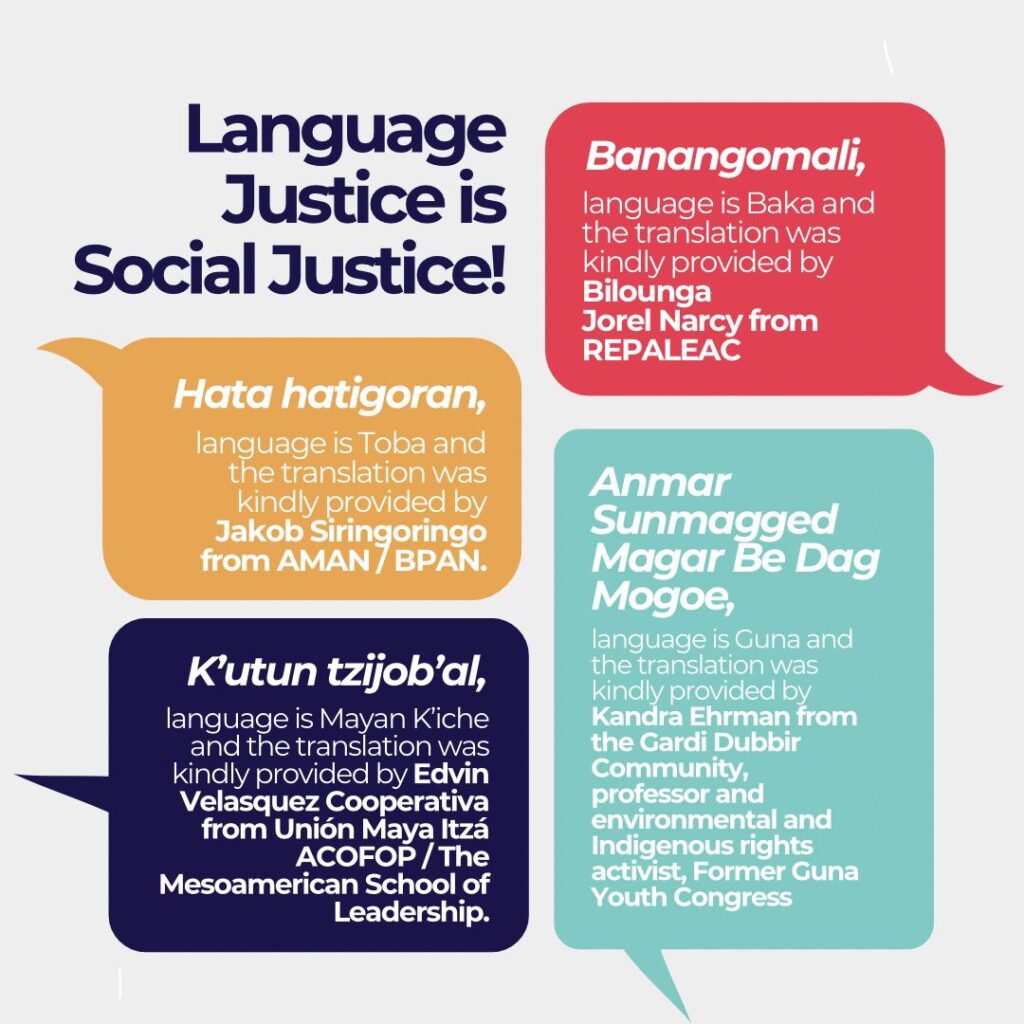February 20, 2025
Author: Stacey Zammit,
Editor: Paula Alvarado
In 2022, the United Nations launched the Decade of Action for Indigenous Languages, underscoring the urgent need to preserve and revitalize Indigenous languages. This initiative builds on the UN’s 2007 Declaration on the Rights of Indigenous Peoples. Yet, despite these efforts, experts warn that by the end of this century, as many as 90% of the world’s languages could vanish and Indigenous languages remain among the world’s most endangered.
For those of us advocating for secure land rights with and for Indigenous Peoples, Afrodescendant Peoples and local communities, language often becomes a tool and a way to communicate a message or make a pressing demand. In recent years, we’ve witnessed powerful messages of resistance in global spaces, including calls to action for environmental justice splashed on billboards across New York during Climate Week, and the international success of books like “We Will Be Jaguars”. The book is the first of its kind to be written by an Indigenous person from the Ecuadorian Amazon, where ancestral knowledge and wisdom about life in the forest have been traditionally passed down orally for millenia, rather than on paper. These examples demonstrate the potency of language to amplify calls for justice.
However, language justice goes far beyond this. It is fundamentally about the right to speak, learn, and thrive in one’s own language. Recent studies show that heritage language fluency is crucial for children’s mental health and resilience. Psychologists have determined that the strong connections to their cultural heritage via language use provide an important indicator of positive behavioural choices and psychological adaptation.
Yet colonial history has not only suppressed Indigenous words and languages, it has also sought to erase the systems of knowledge, histories, and worldviews that these languages carry and that are subsequently passed down between generations, when it comes to climate change and biodiversity preservation. As Cultural Survival recently reported, for example, the Tayra song of the Tikmũ’ũn/Maxakali Peoples, which names and describes 33 different bee species, illustrates how Indigenous languages help preserve crucial biodiversity knowledge. These chants serve as a form of preservation, relying on oral tradition, repetition, and communal rituals. By passing down the distinct names and traits of each species, the Tikmũ’ũn help monitor the health of their ecosystems, ensuring their management remains sustainable and balanced. Tikmũ’ũn women are also the keepers of Maxakali, which is the only surviving language from a group of languages that disappeared with the colonization of Brazil. Today, the Maxakali are among the few peoples in the Atlantic Forest who speak their original language.
One crucial, yet less often spoken about, element to consider is also how climate change, through the displacement of communities, accelerates language loss. As people are forced to leave their homelands due to environmental shifts, it becomes increasingly difficult to preserve the languages tied to these cultures. We invite you to read this powerful piece which asks a poignant question when it comes to the battle which Sámi reindeer herders are waging to preserve their languages: What is left when the things you have words for begin to disappear due to rapid environmental changes?
Despite these concerning questions, there is some hopeful news. In many countries, Indigenous language learning and use as a second language is on the rise, with some advocates claiming that living in an increasingly digitized world provides some benefits to language revitalization by making distance teaching and learning of languages possible, where it was not possible before.
With this in mind, we’ve compiled a list and we invite you to learn more about advancements in this regard via the resources below:
